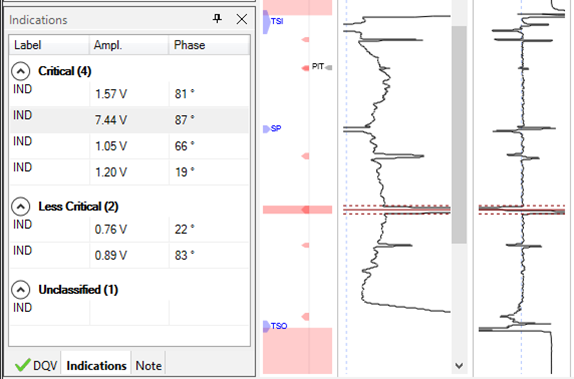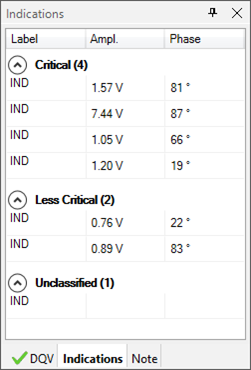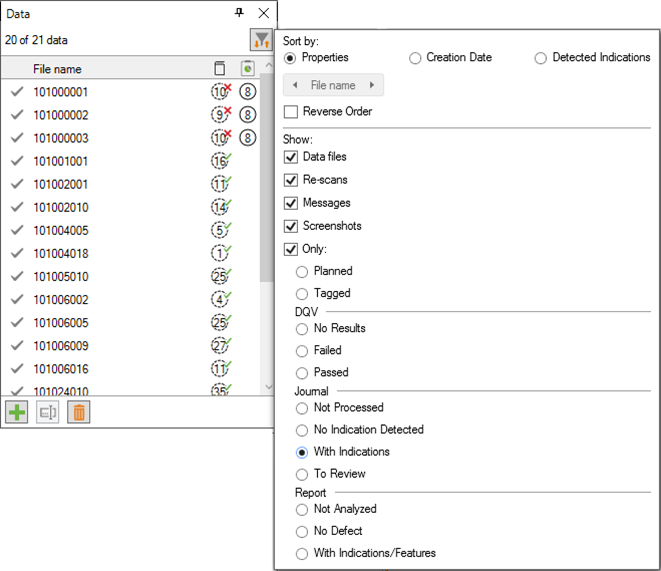Data analysis of shell and tube heat exchangers (HX) has been around for decades yet continues to remain a challenge. The effectiveness and importance of inspection has been proven, but it still requires specialized training, is time intensive, and many parameters influence the data interpretation such as support structures, probe wobble, and geometry variations. Further to this, an unfound defect may have serious consequences: fluid contamination or leaks, decreased heat transfer efficiency, undesired chemical reactions, expensive downtime, as well as environmental and safety risks.
In an effort to reduce these sources of misinterpretation, conventional detection tools relying on user-defined rules have been successfully qualified and deployed in the nuclear industry. Although these tools are useful for large HX, they require intensive pre-inspection preparation work which makes them less suitable for smaller HX.
Over the past decades, AI has made major breakthroughs in various industries allowing computers to perform actions that were once only reserved for the human brain. This modern technology is a major technological revolution that will allow computers to perform various complex tasks in many aspects of life, such as self-driving cars, facial recognition technology and transcription app being used in smartphones.
To remain at the forefront of technology and to help the industry improve the assessment of HX around the world, by combining the expertise of AI specialists and eddy current testing (ECT) experts, Eddyfi Technologies developed a new detection engine using AI for conventional ECT tubing data. The AI detection model integrated into Magnifi® is aimed at improving confidence in the analysis of ECT signals and supports the collection of higher quality data.
What is AI and how does it work?
AI can be defined as a set of technologies aiming to develop a machine that can mimic human responses to a specific problem. Amongst various technologies tagged “Artificial Intelligence” is a subset referred to as “machine learning”. This is nothing more than a mathematical model representing the relationship between a set of input parameters and an output result. The particularity of machine learning is that the model is inherently learned from experimental data using an automatic learning process and statistical methods. For instance, an AI-based surveillance system data might be fed by a database containing pictures of all common car shapes to learn to recognize cars without the need for further human intervention.
Discover how AI-assisted analysis speeds up eddy current testing detect detection and ensures more reliable data interpretation by checking out this exclusive webinar excerpt.
Magnifi AI-ECT module detection capabilities
Eddyfi Technologies worked closely with many partners to collect a wide range of experimental data from real-world inspections. The collected data is then carefully analyzed and any relevant indications are identified with a tag that is used as input to feed the development of a patent-pending detection process. After multiple iterations, modifications and validations, a model is selected to be integrated into a specific Magnifi version.
The Magnifi AI-ECT module then automatically returns AI results by finding, positioning, and marking the exact length of tubesheets, support plates, and potential indications within the software interface, thereby assisting analysts to prepare their final report with higher confidence.

Figure 1: Code View representation(left), typical strip chart representation of ECT bobbin data (right). The Code View displays the AI detection results for the landmarks, in blue, the potential location of indications, in red, and manually entered indications, in black.
Moreover, with automatic screening during acquisition, AI detection for ECT can instantly validate if the full tube length data was collected. Once the AI neural networks have screened the data, additional tools allow the analyst to sort, filter, and classify indications as desired. Examples include:
- Sort tube in descending order of the number of potential indications
- Show only tubes with AI findings
- Show tubes with failed data quality validation (DQV) tests
- Classify indications based on the channel, amplitude range, and phase range. The grouping feature is especially useful with tubes presenting notable quantities of indications.

Figure 2: Indication Grouping results displayed in the Indications pane in the Magnifi frontstage.

Figure 3: Data list pane view with sorting/filtering menu options to change data files displayed based on the Logbook and Report column information.
The new AI-ECT module means that you won’t have to do it alone; consider it your secret weapon for your next tubing inspection. It is simple to learn and easy to use during both acquisition and analysis. The entire process is optimized to be executed in under one second to address the industry’s target of having inspection results as fast as possible. However, it is important to remember that the AI findings are strictly suggestions of potential indications. It remains the responsibility of a certified analyst to identify and report relevant defects.
Enhanced Inspection Efficiency with Magnifi’s Latest Update
The latest version of Magnifi further optimizes tubing inspection workflows by introducing advanced connectivity features and real-time data synchronization. With integrated cloud capabilities, inspectors can now securely store, access, and share inspection data from any location, ensuring seamless collaboration between teams. Automated data backup and version tracking enhance traceability, reducing the risk of data loss and ensuring consitent, high-quality reporting. Additionally, centralized report management simplifies the review process, enabling faster decision-making and improved inspection efficiency. By combining AI-powered analysis with connected inspection tools, Magnifi's latest release helps inspection teams work smarter, not harder, delivering more reliable results with greater speed and accuracy.
For a deeper dive into these new features, check out our blog on connected inspections with Magnifi here.
For system requirements and capabilities of the AI detection module, please refer to the software release notes found here or contact our team of experts who are available to discuss your project and keep you Beyond Current.




